Aurorasound PREDA Preamplifier
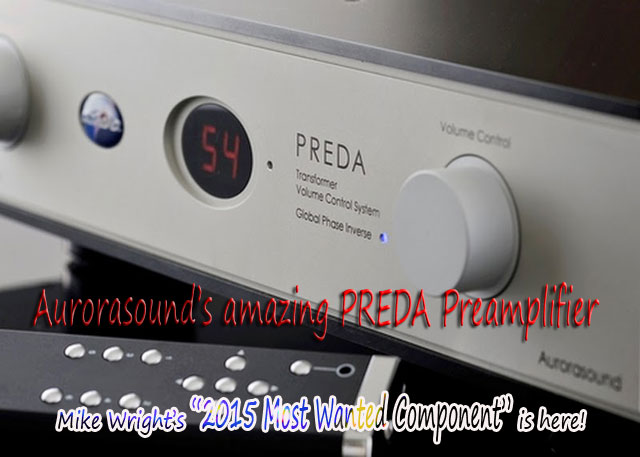
 The Aurorasound PREDA (Preamplfier for Digital Audio) is a solid-state preamplifier from Japan that breaks the mold of what you would typically expect from one of the non-mainstream (for lack of a better word) electronics companies. Everyone is aware of the heavy-hitters from Japan, e.g. TEAC, Sony, Marantz, etc. Some of these companies produce equipment that is so expensive, with import fees so high, that they may never make it to these shores. Let it suffice to say, don’t judge these companies off of what you see in your local Best Buy. Another ultra high-end company from Japan is Audio Note. They put the capital “E” in esoteric, and are other-worldly when it comes to build quality, sound, and of course, cost.
The Aurorasound PREDA (Preamplfier for Digital Audio) is a solid-state preamplifier from Japan that breaks the mold of what you would typically expect from one of the non-mainstream (for lack of a better word) electronics companies. Everyone is aware of the heavy-hitters from Japan, e.g. TEAC, Sony, Marantz, etc. Some of these companies produce equipment that is so expensive, with import fees so high, that they may never make it to these shores. Let it suffice to say, don’t judge these companies off of what you see in your local Best Buy. Another ultra high-end company from Japan is Audio Note. They put the capital “E” in esoteric, and are other-worldly when it comes to build quality, sound, and of course, cost.
Lesser known, but still excellent products from Japan would come from the likes of Zanden, 47 Labs, Technical Brain, Shindo, Leben and many others. Another company we need to recognize for their audio excellence is Aurorasound. My esteemed colleague, Key Kim, first bought Aurorasound to my consciousness with his excellent review of their VIDA phonostage, which seems to be gaining in popularity amongst our analog front-end loving brethren, confirming a lot of what Key said in his review. When the opportunity to review the Aurorasound PREDA came up, I wanted to take advantage of the opportunity as well as work with the U.S. importer, Alfred Kainz, again. Over the years, I have worked with Alfred on several reviews (Artos Audio, KR Audio) and found him to be fast and reliable in terms of getting equipment or information to any questions may have posed to him.
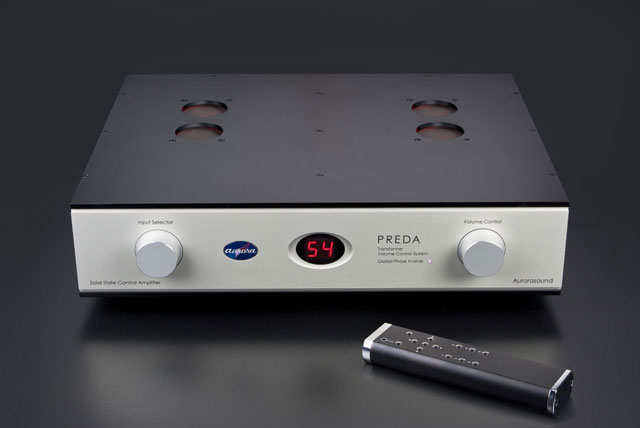
PREDA Is Pretty
As promised, the Aurorasound PREDA (heretofore PREDA) came nicely packed and seated in its felt-like wrap with all the requisite materials; remote, power cord and owner’s manual. After unboxing and unwrapping the PREDA, the first thing I noticed was just how beautiful it was. The second thing I noticed that there was a reason why the box felt heavier than I thought it would. The PREDA is not only very well built but it has some heft to it that makes you feel like you’re getting your money’s worth and at a little under $13K, you certainly won’t feel cheated.
The PREDA’s chassis is made from aluminum. The top and bottom panels are made from about 1/8” thick black aluminum and the front and rear panels from a very light, almost white, silver color with a very smooth, textured feel. The top panel has four approximately 1” diameter holes in it for heat dissipation because the unit’s amplifier modules operate in class-A. The PREDA measures in at 16.5” x 13” x 3.5” (WDH) and weighs 10.8kg or just under 24lbs. The faceplate has two control knobs on it. On the left is the input selector and on the right is the volume control. The volume control has 54-steps, and for those high output devices, you can change the gain to a 16 step setting that will keep you from over-driving the preamp. You can control all of the PREDA’s functionality with the control knobs and an additional two switches just under the faceplate, at the bottom of the PREDA. The pushbutton switch on the left is the power switch, and the switch on the right is for choosing between the 54-step and 16-step gain settings. The remote control does volume, mute, input selector, channel balance and phase reversal. In the center of the front panel resides a digital status display. Finally, the “Aurora” logo is to the left of the display.
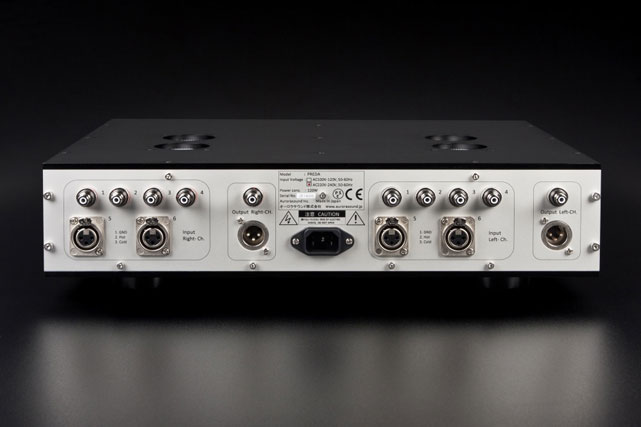
The rear panel is setup in mirror image fashion. Facing the rear panel, there are 6 left inputs (4 single-ended and 2 balanced) and 2 outputs (1 balanced and 1 single ended) located on the right side of the panel, and the same number of inputs and outputs on the left side for the right channel. This is so that if you’re facing the preamp from the front, the left and right channels are located in the same direction as which you’re looking. Looking inside the PREDA, you can really appreciate the craftsmanship and build quality that goes into the PREDA. There is no empty space on the inside and you can see where the money went. Another aspect of the PREDA that is truly special, and makes it distinctive from most solid-state devices, is the signal LEDs. These amber colored LEDs emit a glow that comes up from inside the preamp through four mesh-like perforations that will remind you of the glow of tubes. For about a week or two I thought there were tubes on the inside of the PREDA. I’m almost positive there will be some perspective customers that will complain about it but I thought the light was nice to behold.
Tech Talk
One of the things that really caught my attention when looking inside of the PREDA was how beautiful and sophisticated the design of the circuitry was. In order to get a good understanding of the design attributes of the PREDA, Alfred was kind enough to get the PREDA’s designer Shinobu Karaki San to provide his thoughts on product. According to Karaki San: The PREDA uses six discrete transistor amplifier modules. This module is modified from the circuit used in the VIDA.
But the pre-amp does not need high gain, so PREDA module could achieve very high frequency responseand very low distortion. Also, the PREDA has high current output capability to drive any kind of power amplifierthrough long interconnect cable. The PREDA’s 100kHz frequency response and 0.008% THD in total system are brought by this amp module. This amp module uses NEC and Toshiba vintage transistors and FETs. The 1970s to 1980s were the golden eraof analog audio. Many good transistors were developed for audio specific application. NEC and Toshibawere leading companies to develop those transistors, which have good linearity, super low noise, high hfe (gainratio). But now, those transistors are already discontinued, and shifted to digital switching transistorsmade by China and Taiwan facilities. So, now, analog amplifier circuits need to change to very complicateddesign by those digital transistors. The printed circuit board is changed to all surface mounted parts. I do not thinkthis can make good sound for analog circuit.
Aurorasound is using vintage NEC and Toshiba golden age transistors to design analog amp modules withsimple circuit and selected resistors and capacitors to achieve good performance and good sound.We have a large inventory of vintage NEC and Toshiba transistors for long range production. This is like Telefunken, RCA, Western Electric vintage tubes compared to current China and Russian tubes, I think.
Karaki San also mentioned that his transformer attenuator is manufactured by a Canadian company and that the chassis is made by a local Japanese metal workshop. The PREDA’s footers are by TAOC.
How It Sounds
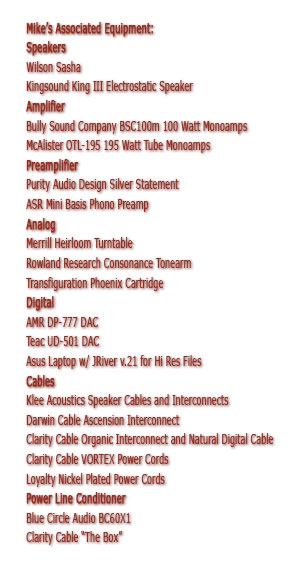 I had the PREDA warming up in my system a couple of days before I did any serious listening. My preliminary listening showed the preamp did quite nicely with the usual attributes with which we judge music. Tonally, the PREDA’s performance approached that of the big name companies that come out of Japan, like Esoteric, Accuphase and Marantz. As from those companies, the PREDA is a little bit on the warm side of neutral. There is maybe not as much warmth as with the Accuphase and Marantz but a lot closer to the Esoteric’s C-02/03 in its neutrality and not objectionable in the slightest sense. The highs were detailed and extended and never over the top or bright. There was good air and dimensionality. I did note that the presence in the midrange was some of the best I had experienced in my listening room, especially with a solid state preamp. The PREDA also did an excellent job with transient attack. I felt the musical timbers to be accurate, especially with woodwind and brass instruments. Pianos sounded very right and real. The staging abilities were also very good as the PREDA threw a stage that was wall to wall in my listening room with good height and, notably, dimensional type depth. The pace, rhythm, overtones, the attacked of the keys and decay of notes were reproduced realistically. I could easily hear the difference between a Steinway and Bosendorfer when I listened to those recordings. The PREDA did everything you would expect it to, especially at this price point and I have to admit, I admired its performance from the first track I queued up.
I had the PREDA warming up in my system a couple of days before I did any serious listening. My preliminary listening showed the preamp did quite nicely with the usual attributes with which we judge music. Tonally, the PREDA’s performance approached that of the big name companies that come out of Japan, like Esoteric, Accuphase and Marantz. As from those companies, the PREDA is a little bit on the warm side of neutral. There is maybe not as much warmth as with the Accuphase and Marantz but a lot closer to the Esoteric’s C-02/03 in its neutrality and not objectionable in the slightest sense. The highs were detailed and extended and never over the top or bright. There was good air and dimensionality. I did note that the presence in the midrange was some of the best I had experienced in my listening room, especially with a solid state preamp. The PREDA also did an excellent job with transient attack. I felt the musical timbers to be accurate, especially with woodwind and brass instruments. Pianos sounded very right and real. The staging abilities were also very good as the PREDA threw a stage that was wall to wall in my listening room with good height and, notably, dimensional type depth. The pace, rhythm, overtones, the attacked of the keys and decay of notes were reproduced realistically. I could easily hear the difference between a Steinway and Bosendorfer when I listened to those recordings. The PREDA did everything you would expect it to, especially at this price point and I have to admit, I admired its performance from the first track I queued up.
What needs to be pointed out here is the PREDA’s handling of dynamics and bass. I have usually found that the sound coming from most of the the smaller Japanese companies to be pleasant and polite. You know, sonically, everything is neat and immaculately portrayed. Music, such as soft rock, trio jazz and chamber music, sound very nice and agreeable. The PREDA does polite also, when the music calls for it. What I was most pleasantly surprised by, regarding the PREDA’s performance, was when the music became dynamic, up-tempo and exciting (or loud) the PREDA let its hair down and took me on a sonic joyride. It definitely plays like it has a second and third gear with which to draw from. It will play loud when the music calls for it, but is always under control. The PREDA’s handling of dynamics is lifelike and realistic. Bass performance with the PREDA inserted into my system was nothing short of excellent. The low end was full, extended and authoritative. Those two aspects of the PREDA’s performance are what caught my attention almost immediately as I was not expecting it to be at such a high level of performance and found it to be quite joyful and exciting. Music that was recorded electronically using drum programs, or that used heavily computer driven syncopated beats to convey the excitement emanating from the artists, it was relayed to the amplifiers exactly as intended. In other words, the PREDA has that “jump factor” so when it comes to playing modern recordings of all types it does a wonderful job of conveying the excitement and the energy in the music.
Here are some of the musical references I used to evaluate the PREDA.
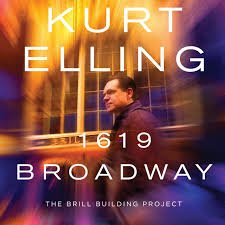 Kurt Elling’s CD, 1619 Broadway [Concord Jazz B008UTV4QW] is a favorite of mine for male vocals. Elling won me over as a fan because he puts his all into every song he sings and is willing to try different things. Vocally, I would say he’s “rhythmically sophisticated.” I found this to be especially so with “An American Tune,” which he renders so sweetly, then turns around and does “You Send Me,” which is done with a more up-tempo, contemporary flavor to it. “You Send Me” is one of several songs from this album that are done “live” and captures the excitement the audience had for the performance as you can tell that they and the performers were appreciating each other. The PREDA performed exceedingly well with this album as I could easily tell that Mr. Elling had connected with his audience, and by the applause and responses they gave in return. The room sounds, the clear distinct chatter of the audience members, the shouts of exhortation and gratuitous applause all came through system very distinct and clear.
Kurt Elling’s CD, 1619 Broadway [Concord Jazz B008UTV4QW] is a favorite of mine for male vocals. Elling won me over as a fan because he puts his all into every song he sings and is willing to try different things. Vocally, I would say he’s “rhythmically sophisticated.” I found this to be especially so with “An American Tune,” which he renders so sweetly, then turns around and does “You Send Me,” which is done with a more up-tempo, contemporary flavor to it. “You Send Me” is one of several songs from this album that are done “live” and captures the excitement the audience had for the performance as you can tell that they and the performers were appreciating each other. The PREDA performed exceedingly well with this album as I could easily tell that Mr. Elling had connected with his audience, and by the applause and responses they gave in return. The room sounds, the clear distinct chatter of the audience members, the shouts of exhortation and gratuitous applause all came through system very distinct and clear.
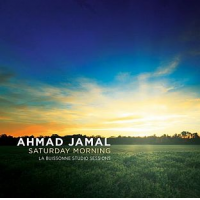 Of all my Ahmad Jamal CDs, Saturday Morning [Jazz Village B00DEPVML4] is one of my very favorites. To me, Jamal has always been sort of an enigma. Early in their careers, most musicians throw caution to the wind and take chances with their craft. Then as they mature, they become more conservative and take less risk. But Jamal went the opposite route. While his earlier recordings were sort of laid back, now at the age of 86, his more recent work has been stretching boundaries. On Saturday Morning, he performs with a couple of longtime favorites, drummer Herlin Riley and bassist Reginal Veal. It’s easy to hear that these guys enjoy playing with and for one another and have been together for a long while. They are accompanied by percussionist Manolo Badrena who gives this recording some of that Latin flavor on bongos and congas, as well as the chime-rack and flexatone. Track 7, “Firefly” is a perfect example of this. While the rhythm is tight and dynamic, there is still a lot of freedom for improvisation. And no one loves that more than Jamal. The PREDA did an exemplary job of laying out the performers across the stage with good depth and layering and air around the performers and very real sounding transient performance.
Of all my Ahmad Jamal CDs, Saturday Morning [Jazz Village B00DEPVML4] is one of my very favorites. To me, Jamal has always been sort of an enigma. Early in their careers, most musicians throw caution to the wind and take chances with their craft. Then as they mature, they become more conservative and take less risk. But Jamal went the opposite route. While his earlier recordings were sort of laid back, now at the age of 86, his more recent work has been stretching boundaries. On Saturday Morning, he performs with a couple of longtime favorites, drummer Herlin Riley and bassist Reginal Veal. It’s easy to hear that these guys enjoy playing with and for one another and have been together for a long while. They are accompanied by percussionist Manolo Badrena who gives this recording some of that Latin flavor on bongos and congas, as well as the chime-rack and flexatone. Track 7, “Firefly” is a perfect example of this. While the rhythm is tight and dynamic, there is still a lot of freedom for improvisation. And no one loves that more than Jamal. The PREDA did an exemplary job of laying out the performers across the stage with good depth and layering and air around the performers and very real sounding transient performance.
 When I think of how the PREDA handled female vocals, I think about Jane Monheit’s CD, The Lovers, The Dreamers and Me [Concord Records]. I was totally captivated by the purity of the tone of her voice, her phrasing, and the way she holds a note then gives it a little tickle at the end. She is so adept at how she can take a tune, add her magic to it and make it all her own. She has an intimate, seductive way with a song. The PREDA allowed me to easily hear the full tonal pallet of Monheit and did an outstanding job of putting her in my listening space with a heightened amount of presence. Another CD I enjoyed listening to was Lorin Maazel and the Cleveland Orchestra performing Stravinsky’s The Rite of Spring [Telarc]. The PREDA seemingly reproduced the air and ambiance of the recorded venue. It was as though someone opened a door and my listening room became expansive. The dynamics and power in the low end allowed my room to be pressurized on more than one occasion which drew a wide grin from the bass lover within me and a visit downstairs from the wife. The string section played in unison and felt like it was reaching up to the heavens, but at the same time, I felt as though I could pick out an individual violinist or cellist. The PREDA did a splendid job with macro and micro dynamics and also with the ability to follow individual lines in the music.
When I think of how the PREDA handled female vocals, I think about Jane Monheit’s CD, The Lovers, The Dreamers and Me [Concord Records]. I was totally captivated by the purity of the tone of her voice, her phrasing, and the way she holds a note then gives it a little tickle at the end. She is so adept at how she can take a tune, add her magic to it and make it all her own. She has an intimate, seductive way with a song. The PREDA allowed me to easily hear the full tonal pallet of Monheit and did an outstanding job of putting her in my listening space with a heightened amount of presence. Another CD I enjoyed listening to was Lorin Maazel and the Cleveland Orchestra performing Stravinsky’s The Rite of Spring [Telarc]. The PREDA seemingly reproduced the air and ambiance of the recorded venue. It was as though someone opened a door and my listening room became expansive. The dynamics and power in the low end allowed my room to be pressurized on more than one occasion which drew a wide grin from the bass lover within me and a visit downstairs from the wife. The string section played in unison and felt like it was reaching up to the heavens, but at the same time, I felt as though I could pick out an individual violinist or cellist. The PREDA did a splendid job with macro and micro dynamics and also with the ability to follow individual lines in the music.
Final thoughts
I thoroughly enjoyed my time reviewing the PREDA. While it was in my system, I had no audio glitches, noises or malfunctions. This includes swapping in and out a lot of cables and audio gear. The only two issues I had about the PREDA (and I’m really nitpicking here) had absolutely nothing to do with its performance. First, the edges of the PREDA could be a little rounder. Sharp lines and corners maybe be a slicker, cleaner look, but I lost count of how many times jabbed myself on the corners of this unit when handling it. The second thing was having to remember that the power switch is located underneath the center of the faceplate. Every time I hosted my audiophile friends and would ask one of them to power down the unit, it would take them forever to find it. Nobody believed me when I told them where to find it. In all seriousness, neither of those nits is really a problem, and you’ll probably be leaving the PREDA powered on most of the time, anyway.
My time with the PREDA overlapped my Blue Circle 2K4 digital amp review and also saw some time in my system while I was reviewing the Lawrence Audio Double Bass loudspeakers. There was nothing about the PREDA’s performance that would lead me to believe that it sounded better with tube or solid-state equipment as it handled both with aplomb. The PREDA worked well with every cable I used with it but especially so with my Clarity, Darwin and Klee Acoustics cables. It got the best out of all genres of music. It did pop and rock just as easily as it did full orchestral and chamber music. And what it did with big band music by Basie or Ellington as well as the Bill Evans trio in an intimate night club was a revelation. I still shake my head when I think of how exciting the bass performance was in my system. There were two remarks made by audiophile friends that stuck with me. The first remark was in reference to the bass. One guy said: “When I talk about good bass, this is what I’m talking about.” The other remark summed up my experience with the PREDA: “Mike, there is simply nothing to not like about the way this (the PREDA) makes your system sound.”
At just under $13K the PREDA will easily compete with preamps in the $20K price-range. And when you combine it with its matching phono stage, the VIDA, you have a killer preamp setup that both digital and analog lovers can dig. I recognized the PREDA as a “Stereo Times Most Wanted Component” for 2015. The only way that I can possibly express my appreciation for it more would be to actually buy it. I’ll be spending the rest of 2016 trying to figure out how to do just that. Highly recommended.


mike wright
Specifications: Aurorasound PREDA Preamplifier – $12,790.00
INPUT: Line-level RCA Unbalanced x4, XLR Balanced x2
OUTPUT: RCA Unbalanced x1, XLR Balanced x1 (#2HOT is convertible to #3 HOT with Global Phase Invert)
GAIN: 10dB, -6dB at Gain select SW on
Frequency Response: 5Hz – 100kHz /1.5dB
Total Harmonic Distortion: 0.008% A weighted
INPUT/OUTPUT Impedance: Input 56kΩ / Output 47Ω
Function: 54-Step Volume Control, add. 16step at Low Gain mode, L/R Balance Control, Mute, Display On/Off, Input Selector x6, Global Phase Reverse, Remote Control for all functions
Size and Weight: W 420 x D 330 x H 90mm, 10.8kg AC100-120V
|
|
Address:
North American Distributor
Highend-Electronics, Inc.
Alfred Kainz
19593 Roanoke Road
Apple Valley, CA 92307
Phone: 760-490-2410
Website: http://highend-electronics.com/
Email: office@highend-electronics.com
Manufacturer:
Aurorasound
Shinoubu Karaki
Yokohama, Japan
Phone: +81-45-953-6708
Website: www.aurorasound.jp
Email: karaka@aurorasound.jp
Stereo Times Masthead
Publisher/Founder
Clement Perry
Editor
Dave Thomas
Senior Editors
Frank Alles, Mike Girardi, Russell Lichter, Terry London, Moreno Mitchell, Paul Szabady, Bill Wells, Mike Wright, and Stephen Yan,
Current Contributors
David Abramson, Tim Barrall, Dave Allison, Ron Cook, Lewis Dardick, John Hoffman, Dan Secula, Don Shaulis, Greg Simmons, Eric Teh, Greg Voth, Richard Willie, Ed Van Winkle, Rob Dockery, Richard Doron, and Daveed Turek
Site Management Clement Perry
Ad Designer: Martin Perry





Be the first to comment on: Aurorasound PREDA Preamplifier